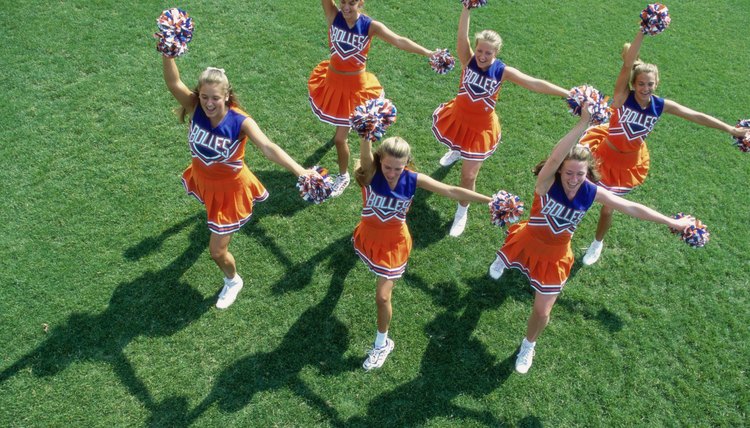What does fact checked mean?
At SportsRec, we strive to deliver objective content that is accurate and up-to-date. Our team periodically reviews articles in order to ensure content quality. The sources cited below consist of evidence from peer-reviewed journals, prominent medical organizations, academic associations, and government data.
The information contained on this site is for informational purposes only, and should not be used as a substitute for the advice of a professional health care provider. Please check with the appropriate physician regarding health questions and concerns. Although we strive to deliver accurate and up-to-date information, no guarantee to that effect is made.
What Muscles Do Cheerleaders Use?

Cheerleading is a physical activity that requires a high degree of fitness. As a cheerleader, you need endurance, strength, flexibility and balance. This involves many of the muscles all over your body. In order to improve your cheerleading abilities, it helps to understand which muscles you are using so you can train more specifically.
Upper Body
In your upper body, you use your deltoid muscles in your shoulders, your pectoralis major and minor muscles in your chest and your latissimus dorsi muscles in your back. You use these muscles to lift other cheerleaders above your head, to tumble and even to hit basic cheerleading arm motions. One of the best exercises you can do to strengthen these muscles is a basic pushup. Upper-body stretches -- such as a partner chest stretch, in which a partner pulls your arms together behind you, and an upper-back stretch, in which you clasp your hands in front of your chest extending your arms away from your body -- help you keep these muscles flexible.
Core Muscles
Your core muscles are found in your back and abdomen. They are your rectus abominus, obliques and spinal erectors. In cheerleading, these muscles help you keep your torso straight. They also give you strength for lifting stunts and performing tumbling skills. In jumps, your core muscles help you lift your legs up toward your body. Strengthen these muscles with crunches. Keep them flexible by doing bridges, or back bends.
Upper Leg
Your upper leg and hip area contain your hamstrings, quadriceps and gluteal muscles. These muscles are used extensively in stunting. In fact they are the powerhouse from which you should get most of your strength in stunting. They also help in jumping and tumbling. Train these muscles by climbing stairs. Stretch them extensively as they get a lot of use and can cause a great deal of pain if allowed to tighten up. Perform a quadricep stretch by pulling your foot in toward your rear end, stretching the front of your thigh. Stretch your hamstrings and your gluteals, by extending one leg out in front of you and lowering your upper body toward it.
Lower Leg
The muscles in your lower leg are your gastrocnemius, soleus and tibalis anterior. These muscles are especially helpful in jumping and tumbling, as they help you get your body off the ground. Strengthen your lower legs with calf raises, placing your hands against a wall and lifting one leg off the ground. Rise up on the ball of your standing foot and lower back down not allowing your heel to touch the ground. To stretch this area, stay near the wall and extend one leg straight out behind you. Keep your toe pointed toward the wall as you lean in to stretch your calf. Focus the stretch deeper into your soleus muscle by repeating it with a bent back leg.
References
Resources
Writer Bio
Based in Wisconsin farm country, Jami Kastner has been writing professionally since 2009 and has had many articles published online. Kastner uses her experience as a former teacher, coach and fitness instructor as a starting point for her writing. She has a Bachelor of Arts degree in secondary education from Trinity International University.
